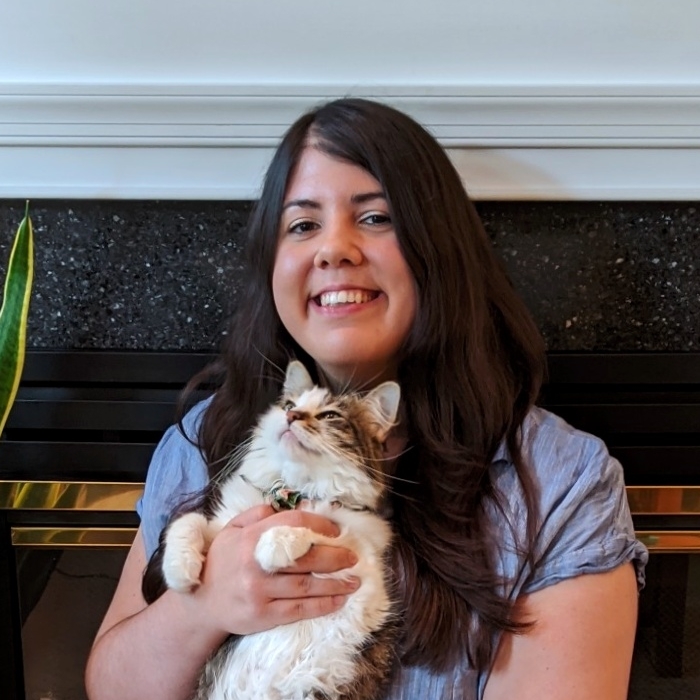Cancer rarely has a single cause. Instead, it typically develops due to a complex mix of genetic predisposition, environmental influences, immune system dysfunction, and plain chance. Because of this multifactorial nature, we can’t completely prevent cancer—but there are several practical steps pet owners can take to reduce the risk.
Spaying and Neutering
Spaying and neutering at an appropriate age offers numerous health benefits, one of which is lowering the risk of certain cancers.
Mammary tumors (the pet equivalent of breast cancer) are especially common in female dogs and cats and can be deadly. Spaying before the first heat cycle (called estrus), which usually occurs between 4 and 6 months of age, drastically reduces the risk of mammary cancer. In fact, dogs spayed before their first heat have a 0.05% risk of developing mammary tumors, compared to 26% in those spayed later in life.
In male pets, neutering eliminates the risk of testicular cancer and significantly reduces the likelihood of developing perianal adenomas—a typically benign but uncomfortable tumor near the anus.
Preventing Cancer-Causing Viruses
In cats, certain viruses are strongly linked to cancer risk. Feline Immunodeficiency Virus (FIV) and Feline Leukemia Virus (FeLV) are known to increase the risk of lymphoma by up to 5 times (FIV) and up to 60 times (FeLV) compared to uninfected cats.
Because these viruses are mainly spread through bite wounds or mating, keeping your cat indoors is a simple and effective prevention strategy. In some cases, vaccination may also be recommended based on your cat’s lifestyle. Talk to your veterinarian to determine whether FIV or FeLV vaccines are appropriate for your pet.
Avoiding Exposure to Tobacco Smoke
Tobacco smoke isn’t just harmful to humans, it poses serious risks to our pets as well. Although we’re still learning about all the effects of secondhand smoke in animals, studies have linked it to higher rates of lung cancer, nasal tumors, oral cancers, and lymphoma in both dogs and cats.
Even if smoking occurs outside, the toxic particles that linger on clothing, skin, and hair can still be inhaled or ingested by pets, especially when they lick their owners. Limiting exposure as much as possible is crucial to protecting their long-term health.
Minimizing Sun Exposure
While fur offers some natural protection from UV rays, pets (especially those with white or light-colored coats) can still develop sun-induced cancers.
For example, white or partially white cats are especially prone to squamous cell carcinoma on exposed areas like the ears, eyelids, and nose. Even regular indoor sunbathing can put these cats at risk. In dogs, sun-related skin cancers are more commonly seen in pets kept outdoors, often appearing on the sparsely-haired areas of the belly, groin, or inner thighs.
If your pet has thin or light-colored fur and spends time in the sun, talk to your vet about using animal-safe sunscreen. Never use human sunscreens without veterinary guidance, as they may contain ingredients (e.g. zinc oxide, artificial fragrances, or PABA) that are toxic if ingested.
Limiting Chemical Exposure
Pets love to roll in the grass, sniff around, and explore the outdoors, but this curiosity can expose them to harmful lawn chemicals like herbicides and pesticides. While the link between these chemicals and cancer is still being studied, some research has associated certain herbicides with an increased risk of bladder cancer in dogs.
To reduce exposure, avoid using these chemicals in your own yard, and steer clear of recently treated areas when walking your dog (especially during the first 48 hours after application). Wiping down your dog’s paws after walks is another easy way to limit contact with any residual substances.
Early Detection Is Key
Perhaps the most important tool in cancer prevention is early detection. Catching cancer in its early stages gives your pet the best chance for successful treatment and improved quality of life.
Start at home by monitoring your pet for any unusual changes, such as new lumps or bumps, decreased energy, weight loss, loss of appetite, or changes in behavior, and report these to your veterinarian promptly.
Even if your pet seems healthy, don’t skip routine wellness exams and lab work, especially as they age. These check-ups help detect subtle issues before they become serious. By working closely with your veterinarian and staying observant at home, you play a critical role in catching potential problems early—helping your pet live a longer, healthier life.
For more information or to set up a consultation with Friendship’s Oncology Department visit our Oncology Department’s webpage.

Dr. Chelsea del Alcazar is a Diplomate of the American College of Veterinary Internal Medicine (Oncology). She graduated from Columbia University, where she majored in Molecular Biology. She attended veterinary school at the University of Pennsylvania School of Veterinary Medicine before completing a 1-year Small Animal internship and a 1-year Specialty internship in Oncology at Angell Animal Medical Center in Boston, followed by a 3-year medical oncology residency program at the University of Pennsylvania School of Veterinary Medicine .
